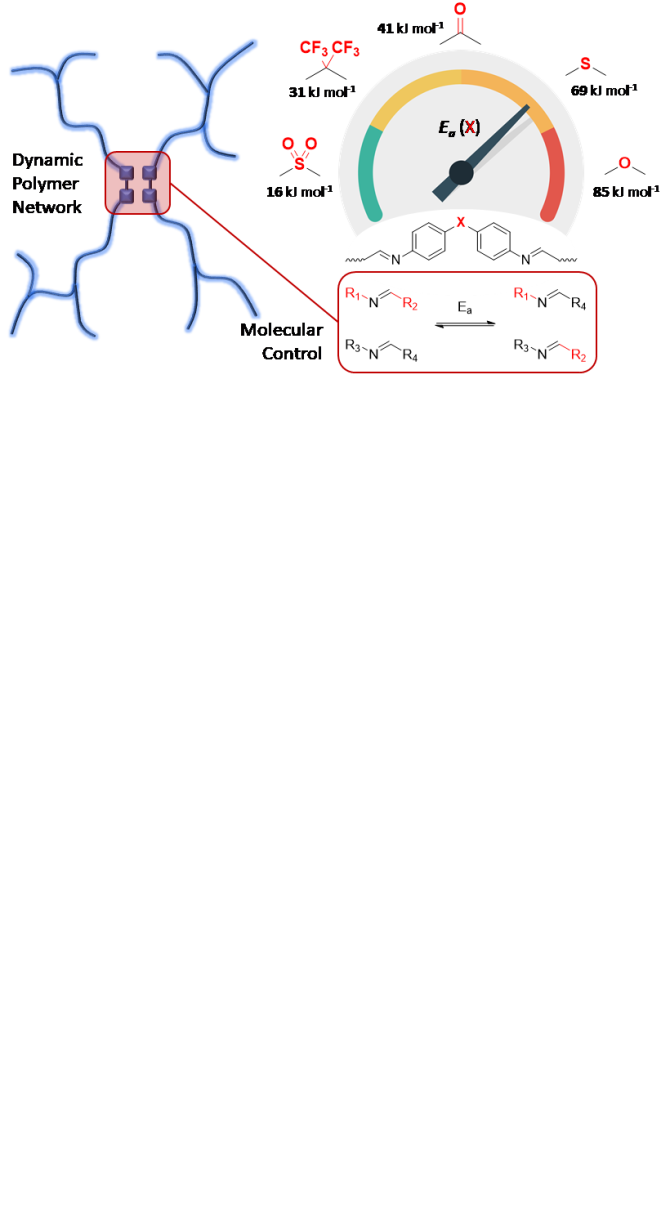News
Sybren Schoustra's first paper published in Chemical Science
Molecular Control over Vitrimer-like Mechanics – Tuneable Dynamic Motifs based on the Hammett Equation
Sybren K. Schoustra, Joshua A. Dijksman, Han Zuilhof, Maarten M. J. Smulders
In our latest study, we were able to design, synthesise and analyse self-healing and recyclable polymer materials relying on dynamic covalent bonds. These dynamic covalent bonds are able to perform bond exchange reactions, and therefore enable a molecular flow within the polymer matrix. As such, covalent adaptable networks (CANs) are constructed. In this study, we developed a method to control the bond exchange reactions of imine groups in a crosslinker polymer network, and as a result tune the physical properties of the materials. This molecular control over physical properties was achieved by applying the established physical-organic concept of the Hammett equation. The Hammett equation links the effect of substituents around the aromatic ring to the reactivity of a functional group on that same ring, and expresses this as a constant Hammett parameter (σ). By applying known Hammett values for substituents we could therefore select specific monomers to construct our polymers. Physical analyses of these materials then showed that the Hammett parameter correlated to a variety of important (dynamic) mechanical and thermal parameters, such as the kinetic activation energy (Ea), glass transition (Tg), and topology freezing temperature (Tg). Lastly, we showed that due to the dynamic nature of the polymers, the materials could easily be recycled and self-healed over multiple cycles without the need for additional chemicals, catalysts or solvent. With this study we aim to guide the way to durable and sustainable materials with unique and predictable properties from a bottom-up physical-organic approach.
Link to article: https://doi.org/10.1039/D0SC05458E
